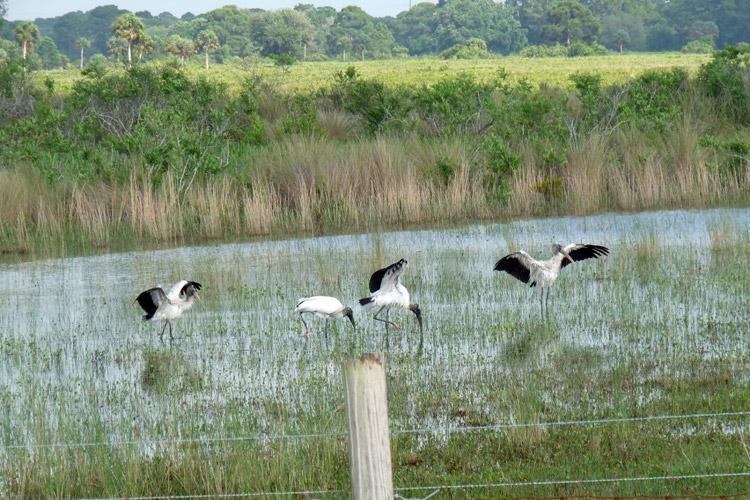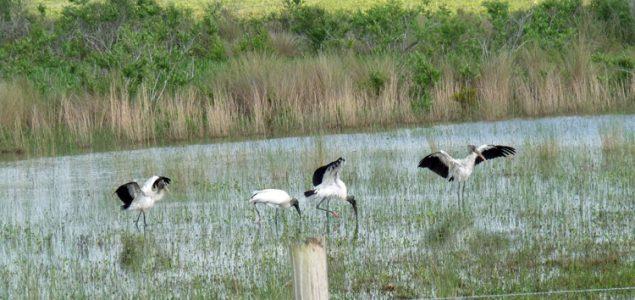When I moved to Florida I thought it cute that yard birds were the live kind. Then, I realized they were in people’s yards because they had nowhere else to go. They’re forced to coexist with humans on chemically treated lawns, mulch, concrete and asphalt.
Great egrets trek through my neighborhood regularly looking for handouts. Flocks of white Ibis dig for grubs on lawns. Sandhill cranes take up residence on pesticided lawns by an algaecide-treated pond. Wood storks hang out in a dumpster behind a restaurant and ibises forage in a mountain of debris on a construction site.
Our fellow creatures live life on the fringes, adapting to us. Because of our ignorance, lack of concern and greed, we have forced them into lives of making do with hideous substitutes for “all that is natural, that is real, that is YES” to paraphrase e.e.cummings.
I’ve been photographing at state parks for years. What’s inside a park feeds my soul. What’s outside the gates haunts me. Florida scrub jays, gopher tortoises, all commonly seen in a park, are not found in neighborhoods. Chapman’s, myrtle, and sand live oaks which feed and house Florida scrub jays rarely grace anyone’s yard. Homeowners pass up Florida’s beautiful wildflowers in favor of exotics. More and more, I am resentful of the fact that I have to go to a park to witness anything real.
How has this come about? For one thing, deed-restricted neighborhoods obsessed in keeping up property values insist that residents plant lawns, perpetuating a wasteful, expensive practice. They require weed free lawns, thereby promoting the use of toxic chemicals to keep them that way.
Lawns are sterile, monotonous and lifeless. It is like posting a KEEP OUT sign to wildlife who can’t eat the stuff, find shelter in it, hide in it, nest in it. Just about the only life a lawn supports is fire ants. Razing land is another issue. When building a house, clearing lot line to lot line is the accepted practice, which kills the wildlife and destroys the flora.
Have our personal values been demoted to property values? Has the land ethic been replaced by the bottom line? These, along with the chain saw and the bulldozer, are the greatest threats to our natural world.
Ultimately, when those creatures and plants we have bulldozed are gone, we will make do. We will drive miles to a designated green area our legislators have seen fit to set aside so we can get back to our “roots.” We will entomb ourselves in brick and block on concrete, with a few perfunctory nods to the green world. We will move through the landscape encapsulated in our air-conditioned cars. Our air will be fetid, our ground poisoned, our waterways unliveable.
Is this already happening? There is always room for hope. Plus some action. Here’s what I put on my list:
- Live in an area without deed restrictions or one with enlightened policies.
- Elect officials with a clearly stated environmental policy and a track record to back it up. Vote the moribund ones out.
- Buy an electric car or carpool, bike, walk.
- Downsize. Do I really need 2000 square feet under air?
- Shop less, accumulate even less, store nothing.
- Think sustainable, buy “used”, re-cycle.
- Garden for wildlife, plant native plants, weed by hand.
- Buy local produce, eat at local restaurants that buy locally.
- Turn the thermostat up in summer, down in winter.
- Join local environmental groups and get to work.
What’s on your list? Look in the faces of your children and think of their grandchildren and their grandchildren. Start now.

